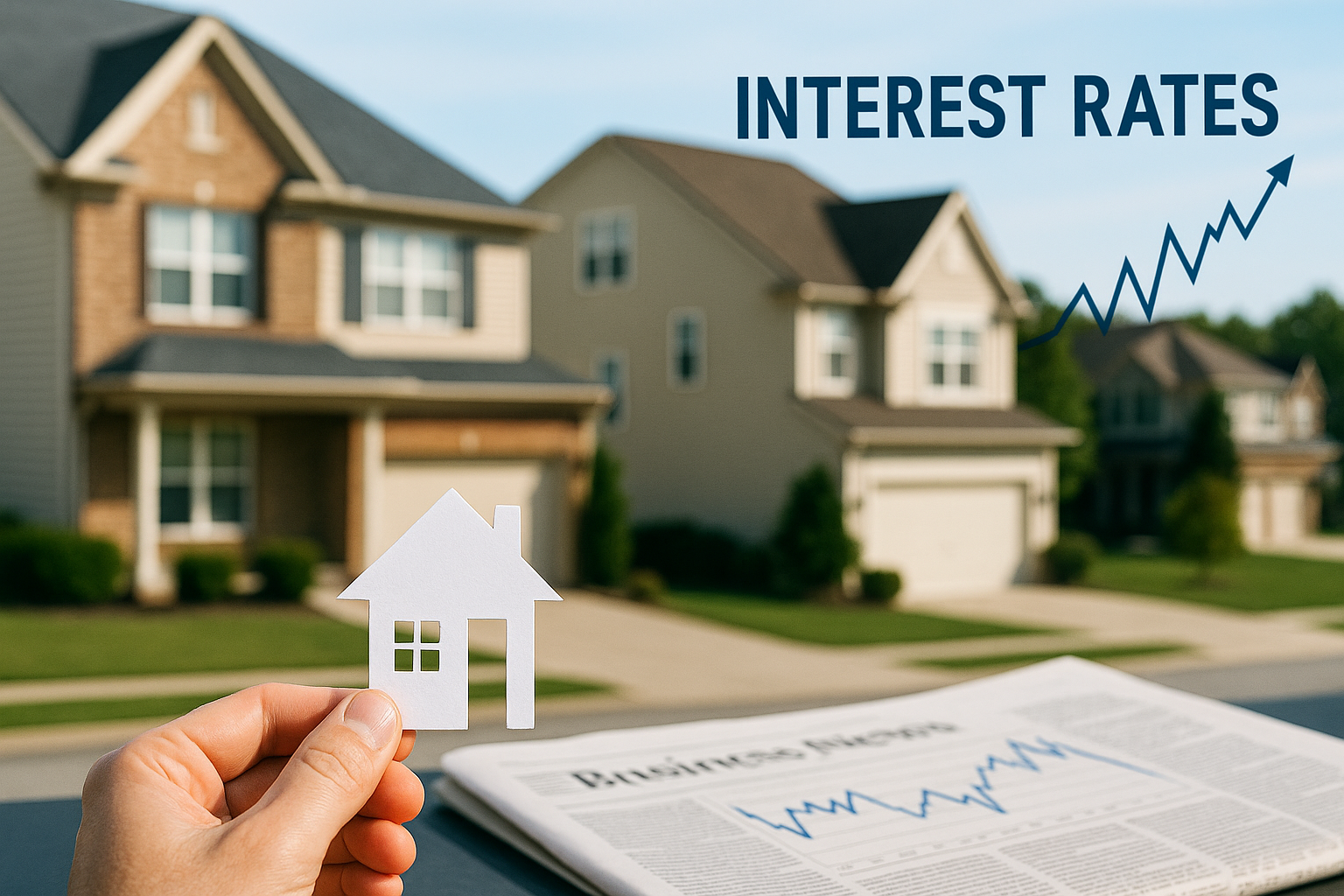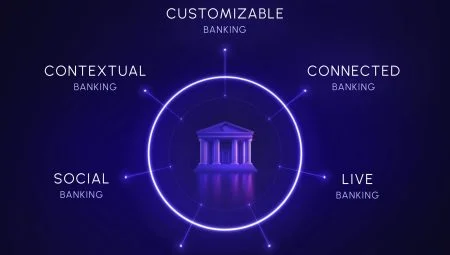What Are Interest Rates and Who Controls Them?
Interest rates represent the cost of borrowing money. In the U.S., the Federal Reserve (and equivalent central banks globally) sets a benchmark interest rate that influences everything from personal loans to mortgages.
When the Fed raises rates, it becomes more expensive for banks to borrow money. These costs are passed down to consumers through:
-
Higher mortgage rates
-
Reduced access to credit
-
Stricter lending standards
This central lever controls the pace of the housing market—either fueling it or cooling it.
The Relationship Between Interest Rates and Home Affordability
Rising interest rates directly affect what homebuyers can afford. Here’s how:
-
Monthly Payments Increase: A 1% rise in rates can reduce your buying power by up to 10%. For example, a $400,000 loan at 3% is ~$1,686/mo, while at 6% it jumps to ~$2,398/mo.
-
Loan Approval Becomes Tougher: Higher payments mean lenders apply stricter debt-to-income (DTI) thresholds, disqualifying more borrowers.
-
First-Time Buyers Get Squeezed: Lower down payments and limited reserves make higher rates especially punishing.
Ultimately, affordability shrinks as rates rise—and vice versa.
17 Ways Interest Rates Impact the Housing Market
-
Buyer Demand Drops – Fewer people qualify or feel confident to buy.
-
Mortgage Approvals Fall – Lenders become more cautious as risk increases.
-
Refinance Activity Slows – High rates discourage homeowners from replacing existing loans.
-
Home Prices Adjust – Sellers reduce asking prices to attract hesitant buyers.
-
Builder Activity Shifts – Construction slows as demand contracts.
-
Rental Demand Rises – With homeownership harder, more people rent longer.
-
Inventory Increases – Homes sit on the market longer, increasing supply.
-
Time on Market Extends – Slower buyer activity means longer listing periods.
-
More Price Reductions – Sellers cut prices more frequently.
-
Investment Property ROI Drops – Cash flow worsens as borrowing costs rise.
-
Foreclosures May Rise – Especially for variable-rate mortgage holders.
-
Housing Starts Decline – Builders delay new projects due to soft demand.
-
Market Sentiment Weakens – Headlines and rate hikes trigger fear and hesitation.
-
Buyer Psychology Shifts – FOMO is replaced by caution and negotiation.
-
Fixed-Rate Loans Preferred – Buyers avoid adjustable-rate risk.
-
Rate Locks Become Common – Buyers rush to secure low rates amid volatility.
-
Adjustable-Rate Loans Regain Popularity – As a workaround for affordability.
Short-Term vs Long-Term Effects on Housing
Interest rates influence the market in both immediate and delayed ways:
Short-Term Effects:
-
Buyer Hesitation: Homebuyers often delay purchases during rate hikes.
-
Loan Applications Decline: Mortgage lenders see quick drops in new applications.
-
Real Estate Closings Slow: Fewer deals close as financing falls through or buyers walk away.
-
Price Negotiations Begin: Sellers start to lose leverage.
Long-Term Effects:
-
Home Prices Adjust Downward: Sustained high rates can lead to price corrections.
-
New Construction Lags: Builders may halt projects, leading to lower future inventory.
-
Shift in Homeownership Rates: Long-term renters increase as affordability shrinks.
-
Changes in Urban vs Suburban Demand: High rates might revive interest in more affordable areas.
While short-term volatility can seem chaotic, the long-term trends reshape the housing landscape permanently.
How Rising Rates Affect Buyers vs Sellers
Interest rate shifts affect both sides of the market—but not equally:
Buyers
-
Must adjust expectations—fewer amenities or smaller homes.
-
Often stretch budgets, delay moves, or settle for renting.
-
Prefer fixed-rate mortgages for predictability.
Sellers
-
Face longer listing times and more negotiations.
-
Often need to price more competitively to attract buyers.
-
May delay selling if they hold a low-rate mortgage (“rate lock-in effect”).
The power dynamic shifts: in a high-rate market, buyers gain negotiating leverage, while sellers lose urgency.
Interest Rates and Real Estate Investment Strategy
For investors, interest rates reshape entire financial models:
-
Cap Rates Rise: Property values fall to accommodate higher borrowing costs.
-
Cash Flow Tightens: Loan payments eat into rental income.
-
Flipping Becomes Riskier: Rising rates shrink buyer pools and profit margins.
-
Buy-and-Hold Adjustments: Long-term strategies shift toward cash purchases or REITs (real estate investment trusts).
-
Multifamily Becomes Attractive: Investors seek properties with consistent income.
Adapting to interest rate environments is essential for protecting return on investment.
Can Lowering Rates Revive a Slowing Market?
Historically, yes—rate cuts stimulate housing demand.
-
Case Study 2008–2013: The Fed slashed rates to near-zero during the financial crisis, sparking a housing recovery in following years.
-
Post-2020 Boom: Pandemic-era rate cuts led to a surge in homebuying, bidding wars, and price growth.
But rate cuts don’t act instantly. It often takes 6–12 months to fully feel their impact. Additionally, other factors—like inflation or job security—can override low rates.
FAQs on Interest Rates and Housing
Q1: Why do interest rates change so frequently?
They’re adjusted by central banks in response to economic conditions like inflation, employment, or GDP growth.Q2: Are fixed or adjustable rates better during high interest periods?
Fixed offers security, but ARMs (adjustable-rate mortgages) may be cheaper short-term—though riskier long-term.Q3: How do rates affect first-time buyers the most?
Smaller budgets mean higher rates reduce loan size or disqualify buyers entirely.Q4: Will home prices crash if rates rise too fast?
Not necessarily, but they may correct modestly. Supply, demand, and income levels also matter.Q5: Can you refinance if rates later drop?
Yes—refinancing is a popular way to reduce payments once rates fall again.
Conclusion: Navigating a Market Shaped by Interest Rates
Understanding interest rates isn’t just for economists—it’s essential for homebuyers, sellers, and real estate investors alike.
Whether rates are rising or falling, the housing market adjusts with new rules of engagement. Those who understand the mechanics can:
-
Make better timing decisions
-
Maximize return on investment
-
Protect their financial future
In housing, the cost of money is everything. Master it, and you master the market.
🔗 External Resource: Federal Reserve – How Interest Rates Influence the Economy
-



